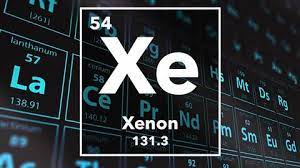Xeon
Xenon, with the symbol Xe and atomic number 54, is a dense, colorless, and odorless gas. It's incredibly rare, making up only about 1 part in 10 million of Earth's atmosphere. Despite its scarcity, xenon holds significant value due to its unique properties. Like other noble gases, it's generally unreactive because of its stable electron configuration, making it inert to most chemicals.
Though often considered unreactive, xenon can surprisingly form a few chemical compounds. This discovery paved the way for its diverse applications. Xenon lights, found in high-performance car headlights, utilize the gas's ability to emit a bright, white light when electrically charged. In medicine, xenon acts as a powerful anesthetic, offering pain relief during surgeries.
Interestingly, xenon is more abundant in meteorites than in our atmosphere, suggesting its extraterrestrial origins. Scientists are even exploring its potential role in future space exploration, investigating its use as a propellant or fuel source for spacecraft. The unique properties of xenon continue to spark innovation and hold promise for exciting discoveries in various fields.

